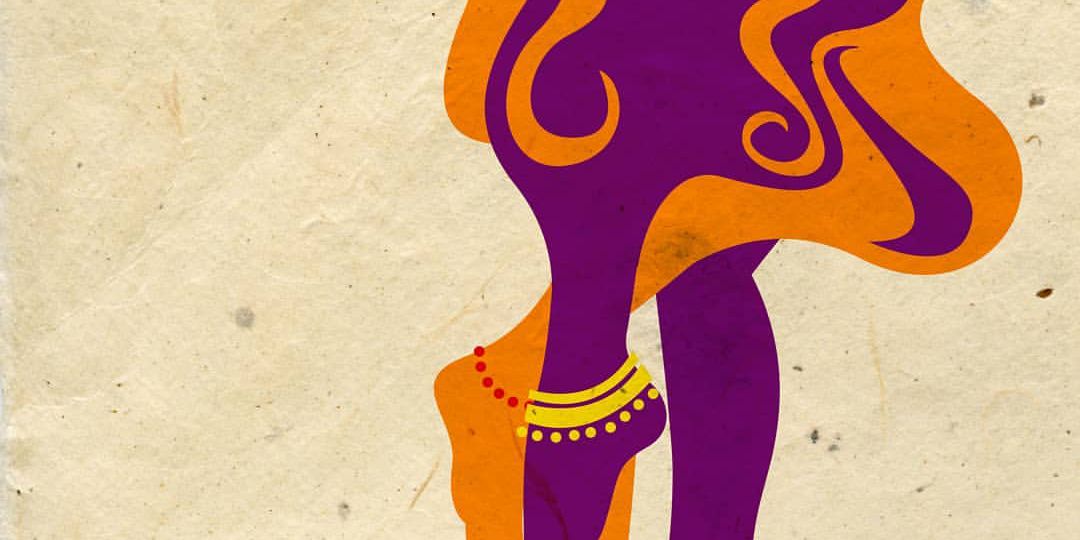
“I am still labelled as the writer of Lihaaf. The story brought me so much notoriety that I got sick of life. It became the proverbial stick to beat me with and whatever I wrote afterwards got crushed under its weight.” So said Ismat Chughtai in her book ‘A Life in Words: Memoirs’[1]about how the short story changed her life, and not for good.
‘Lihaaf’[2], the controversial short story by Ismat Chugtai was published in the year 1941, way before Independence, in an Urdu Literary Journal titled Adaab-i-Latif. It was about repressed sexual desires and the exploitation of another’s body to fulfil oneself.
When I first came across ‘Lihaaf’, I was 18 years old. Being a student of Gender and Intersectional studies, I was proud that Ismat Chughtai’s writing had the power to break barriers of patriarchy and bring to light the untouched subject of female desire and sexuality. Her writing talks about women’s bodies not as an object of the male gaze but rather as independent entities. Though heavily scrutinised, her writings ‘lifted the veil’ over the controversial and made the invisible the subject of discussion.
Begum Jaan in the story can be seen as a sexually-deprived woman who gets no attention from her husband, Nawab Sahab. Their marriage stands more as an economic contract between their families.
“Having married Begum Jaan he tucked her away in the house with his other possessions and promptly forgot her. The frail, beautiful Begum wasted away in anguished loneliness.”
The story refers to a time when women’s bodies were traded in the name of marriage and treated as possessions. The man of the house could use this marriage as a front to continue his ‘veiled’ activities like Nawab Sahab did. He could be seen with the young, slender-waisted men in the story, while the patriarch in him didn’t let Begum Jaan go out of the house or visit her relatives.
The descriptive words used for Begum Jaan are: “Her complexion was marble white without a speck of ruddiness.” A stark contrast can be seen in the description of her masseuse, Rabbu: “She was as dark as Begum Jaan was fair, as purple as the other one was white.” We know that in our country, beauty standards decide the desirability of a woman. The language and the words used are related to sexual re-presentation of a woman’s body. The terminology used to describe ‘beauty’ is thus, problematic.
The use of language played a major part in making the story what it was. Today, when we talk about female bodies or anything related to our sexuality, we often find solace in the English language. We often don’t know the name of body parts in languages other English. Ismat Chughtai wrote about bodies in Urdu. As poetic as it may sound, it created a massive uproar at the time as languages in India are also associated with religion. Talking about female ‘sexual’ body parts of women who belonged to a Muslim household, made Chughtai“shameless”. Not much has changed since then. Even today, if one openly acknowledges their sexuality and doesn’t conform to the set standards to beauty, they are termed “shameless”.
Also, giving voice in the story to a young girl, who did not know much about what was going on around her and with the homosexual Nawab and Begum, is quite representational of an India, a place where homosexuality was till now ‘veiled’. Begum Jaan uses her sexuality as a means to empower herself. In the forefront she works within patriarchal norms and adheres to the standards of a dutiful wife, while within the quilt, she acknowledges her sexual desires and does everything in her power to fulfil them and seeks solace in a non-conforming sexual relationship. Her relationship with Rabbu and Nawab Saab’s relationship with the young men;the bodies and their desires bridge the gap left by the heteronormative marriage.
She subverts the patriarchal norms that she has to adhere to by recognising her sexuality and her sexual desires. The constant reference to “the elephant” under the “quilt” which doesn’t let the narrator sleep, also serves as a metaphor for the sexual desires and relationships that are either not spoken of or only talked about in terms of metaphors and not addressed directly.
At the time when Lihaaf was written, sexual relationships between people of the same gender were not discussed openly. Their existence was accepted but it was something that was ‘veiled’ and so the narratorial voice in the story uses metaphors so as to not address it openly. The unknowingness of the whole truth can also be seen in the narratorial voice. The distance in addressing it but not saying it out loud is visible. The same aversion to addressing sexuality in general can be seen even now. It has taken us too many years to even acknowledge the existence of homosexuality.
Lihaaf not only re-presented the unspoken but also brought to light the taboo subject of female sexuality and the presence of female desires in a heteronormative marriage. A woman can be more than something that just exists in a marital home, a woman can be more than just a beautiful body used as a mere decoration in the household. Isn’t it high time we talked about the problems of the terminology used to define beauty and the association of it with sexuality if Chughtai tried doing this in 1941? Is it time to come out of ‘the quilt’?
इस लेख को हिंदी में पढ़ने के लिए यहाँ क्लिक करें।
[1]Chughtai, Iṣmat, and M. Asaduddin. A Life in Words: Memoirs. Penguin Books, 2013.
[2]Chugtai, Ismat. The Quilt and Other Stories. Sheep Meadow Press, U.S., United States, 1994.